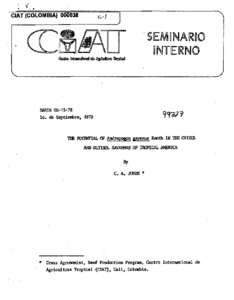Mission
To reduce hunger and poverty, and improve human nutrition in the tropics through research aimed at increasing the eco-efficiency of agriculture.
People
CIAT’s staff includes about 200 scientists. Supported by a wide array of donors, the Center collaborates with hundreds of partners to conduct high-quality research and translate the results into development impact. A Board of Trustees provides oversight of CIAT’s research and financial management.
Values
- Shared organizational ethic
- We respect each other, our partners, and the people who benefit from our work. We act with honesty, integrity, transparency, and environmental responsibility in all of our joint endeavors.
- Learning through partnerships
- We work efficiently and pragmatically together and with partners. Considering our diversity to be a key asset, we adapt readily to change and strive to improve our performance through continuous learning.
- Innovation for impact
- We develop innovative solutions to important challenges in tropical agriculture, resulting in major benefits for the people who support, participate in, and profit from our work.
Members:
Resources
Displaying 916 - 920 of 958El uso eficiente de recursos e insumos en el establecimiento y mantenimiento de pastos tropicales
Descripción y daños de las plagas que atacan el fríjol [conjunto audiotutorial]
This audiotutorial unit (cassette, printed script, 80 color slides, study guide, self-evaluation test), prepared by the Communications Support Unit at CIAT, is available for use with a manually or automatically synchronized slide projector/cassette tape recorder. Each unitis available from the Distribution Office at a cost of US$50; photocopies of the study guide alone can be obtained from the Bean Information Center. Pests are one of the main factors limiting bean production. Of the 200 species of insects and mites, however, only a few cause losses of economic importance.
An explanatory manual for CIAT's computerized land resource study of Tropical America
The potential of Andropogon gayanus Kunth in the oxisol and ultisol savannas of Tropical America
Suggested guidelines for conducting regional trials
A complete set of guidelines is provided for conducting cassava regional trials. In addition to general guidelines on site selection, exptl. design, planting and harvesting time, and others, specific recommendations are given on technology to be used for the different agronomic practices required, data collection, disease and insect damage evaluations, trial methodology, and strategies for selecting promising var. (CIAT)




